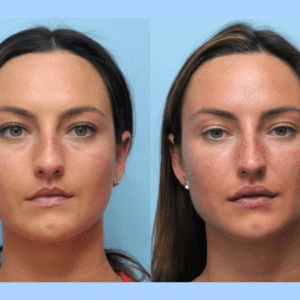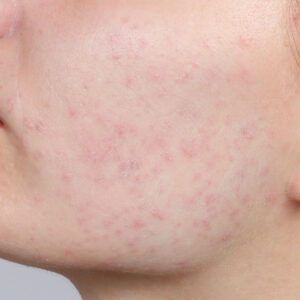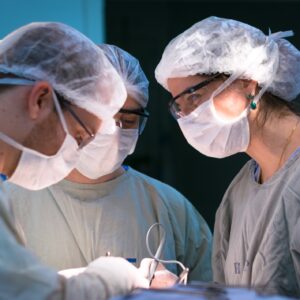Liposuction is one of the most sought-after cosmetic procedures for individuals seeking to contour their bodies and eliminate stubborn fat deposits. As with any surgical intervention, understanding the recovery process is crucial for setting realistic expectations and ensuring a smooth healing journey. One of the common concerns among prospective patients is the level of pain involved during recovery. This article aims to provide comprehensive insights into Liposuction in Abu Dhabi and address how painful the recovery process typically is, along with helpful tips to manage discomfort effectively.
Understanding Liposuction and Its Recovery Process
What Is Liposuction?
Liposuction is a cosmetic procedure designed to remove excess fat deposits from specific areas of the body. It is often performed to improve body contours and achieve a more proportionate appearance. The procedure involves inserting a thin tube, known as a cannula, to break down and suction out fat cells. The recovery involves multiple stages, each with varying degrees of discomfort.
The Initial Post-Operative Phase
Immediately after liposuction, patients usually experience swelling, bruising, and soreness. This initial phase typically lasts from a few days to a week. During this period, the body begins healing, and discomfort may be moderate to intense depending on individual pain thresholds and the extent of the procedure.
Factors Influencing Pain Levels During Recovery
Several factors can influence how painful the recovery is, including the areas treated, the volume of fat removed, and the technique used by the surgeon. Additionally, individual pain tolerance, adherence to post-operative care instructions, and overall health play vital roles in shaping the recovery experience.
Common Discomforts During Liposuction Recovery
Swelling and Bruising
Swelling is a natural response to surgical trauma, and it can cause a feeling of tightness and discomfort. Bruising may also occur, contributing to the overall soreness in the treated areas. These symptoms usually peak within the first few days and gradually subside.
Pain and Soreness
Most patients report feeling soreness or a dull ache in the treated zones during the initial days. Some may experience sharper pain, especially if there was significant trauma to tissues. The sensation often resembles muscle soreness but can be more intense initially.
Tightness and Sensitivity
Post-surgery, the skin and underlying tissues may feel tight and sensitive to touch. This sensation can contribute to discomfort, particularly when adjusting position or wearing compression garments.
Drainage and Fluid Accumulation
In some cases, patients may notice minor drainage or fluid buildup, which can cause localized discomfort. Proper drainage management and follow-up care help minimize this issue.
Managing Pain During Liposuction Recovery
Pain Relief Medications
Surgeons typically prescribe or recommend over-the-counter pain relievers to manage discomfort during recovery. These medications help reduce soreness and allow patients to perform daily activities with less discomfort.
Use of Compression Garments
Wearing compression garments as advised can help control swelling, support tissues, and reduce discomfort. Proper compression ensures better contouring and faster healing, contributing to a more comfortable recovery.
Rest and Activity Management
Adequate rest is essential for healing. Patients are encouraged to avoid strenuous activities during the initial recovery phase. Gentle movement, as advised by the surgeon, can prevent stiffness and promote circulation.
Cold Therapy Applications
Applying cold packs to the treated areas can help decrease swelling and numb pain sensations. This simple technique provides additional comfort during the early days post-surgery.
Hydration and Nutrition
Staying well-hydrated and maintaining a nutritious diet support the healing process. Proper nutrition can reduce inflammation and promote tissue regeneration, indirectly alleviating discomfort.
Tips for a Comfortable Recovery
Follow Post-Operative Instructions Carefully
Adhering to the surgeon’s guidelines regarding medications, activity restrictions, and care routines is crucial for minimizing pain and complications.
Maintain Proper Hygiene
Keeping the incisions clean and dry prevents infections, which can exacerbate discomfort. Follow all wound care instructions diligently.
Gradually Resume Activities
Start with light activities and increase intensity gradually as tolerated. Avoid high-impact exercises until fully cleared by the surgeon.
Attend Follow-Up Appointments
Regular follow-ups enable the surgeon to monitor healing progress and address any issues promptly, ensuring a smoother recovery.
Expected Timeline for Pain and Discomfort Resolution
First Few Days
Pain and swelling are most intense during this phase. Patients typically experience soreness, tightness, and minor discomfort, which gradually respond to pain management strategies.
One to Two Weeks
Discomfort usually diminishes significantly as swelling decreases. Many patients report that pain becomes manageable with minimal medication.
Beyond Two Weeks
Most of the pain subsides, although some residual soreness or tightness may persist for several weeks. The body continues healing, and swelling continues to resolve.
When to Seek Medical Assistance
While some discomfort is normal, persistent or worsening pain, unusual swelling, or signs of infection warrant prompt medical attention. Maintaining open communication with the healthcare provider ensures any complications are addressed early.
Conclusion
The recovery phase after Liposuction Abu Dhabi varies among individuals, but generally, the pain experienced is manageable with proper care and medication. Understanding what to expect and following the recommended post-operative routines can significantly reduce discomfort and facilitate a quicker, more comfortable healing process. Ultimately, while some pain and soreness are inevitable, they are typically temporary and part of the journey toward achieving your desired body contours.





